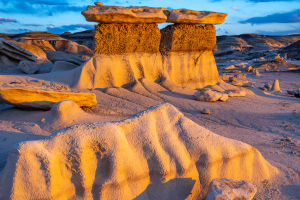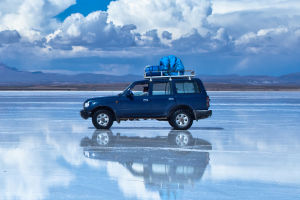Ever wondered what it actually takes to climb Mount Fuji—beyond just snapping photos from afar? We're not talking about a quick roadside stop or buying a souvenir keychain. We're talking boots-on-the-ground, breath-stealing, muscle-burning, once-in-a-lifetime kind of adventure.
Climbing Japan's tallest mountain (3,776 meters / 12,389 ft) sounds epic—and it is—but it also takes planning, patience, and a few tricks to get it right. Let's break it down together.
What Makes Mount Fuji So Special?
There's a reason Mount Fuji draws over 300,000 climbers each summer. Its perfect snow-capped cone, visible from Tokyo on a clear day, has been celebrated in Japanese art and literature for centuries. But more than just a postcard image, it's a mountain that you can truly conquer—without technical climbing skills.
The most popular route, the Yoshida Trail, makes it possible for beginners to summit safely. But while Fuji might be beginner-friendly, it's far from easy. Altitude sickness, strong winds, and freezing temperatures are all real challenges—even in July or August.
Best Time to Climb (And Why It Matters)
Mount Fuji's official climbing season runs from early July to early September. During these two months, trails are open, mountain huts are operational, and weather conditions are safest. Outside of this season? Climbing is strongly discouraged due to snow, ice, and lack of rescue services.
If you want to avoid the worst crowds, aim for early July or late August weekdays. Mid-August is especially packed with both domestic and international climbers.
How to Get There Without the Stress
From Tokyo, the easiest way is to take a highway bus to the Fuji Subaru Fifth Station, which is the most popular starting point for the Yoshida Trail.
• Bus from Shinjuku Station: ~$22 USD one way (approx. 2.5 hours)
• By train: Limited express from Shinjuku to Kawaguchiko ($26 USD), then a local bus to 5th Station ($11 USD)
Pro tip: Book your round-trip bus ticket in advance, especially during weekends or public holidays.
Costs You Shouldn't Ignore
While there's no mandatory entrance fee, a voluntary donation of around $10 USD is strongly encouraged to support trail maintenance and safety.
Other costs to consider:
1. Mountain hut overnight stay: ~$60–80 USD per person (includes 1 meal)
2. Gear rental (if needed): ~$45–70 USD for boots, jacket, headlamp, etc.
3. Food and water on the mountain: Very pricey—$4 for a small bottle of water, $8–12 for a basic curry meal. Bring snacks and a refillable bottle!
One Key Decision: Day Climb or Overnight?
There are two main ways to summit Fuji:
1. Sunrise Climb: Start around 8–10 PM, hike through the night, and reach the summit by sunrise.
2. Overnight Stay: Hike to a mountain hut (usually 7th or 8th station), rest, then wake up early to reach the summit by dawn.
While the sunrise climb sounds romantic, it's exhausting and risky, especially if you're not used to high altitudes or haven't had time to acclimate. Staying in a mountain hut, though pricier, gives you rest and improves your odds of reaching the summit without illness or injury.
Tips to Beat Altitude Sickness
Altitude sickness can hit as low as 2,500m—and Mount Fuji is way above that.
Here's how to reduce your risk:
1. Spend time at 5th Station (2,300m) before climbing to let your body adjust.
2. Climb slowly. The slower you go, the more time your body has to adapt.
3. Hydrate constantly—even if you're not thirsty.
4. Consult a doctor for suitable remedies before your trip.
Don't Forget These Essentials
Fuji might be crowded, but it's still a mountain—and the weather can flip in minutes.
Here's what you must bring:
• Warm layers (even in summer, it's below freezing at the top)
• Waterproof jacket and pants
• Gloves and hat
• Headlamp (if hiking at night)
• Portable power bank
• Cash (no ATMs on the mountain)
Is It Worth It?
Absolutely—but only if you prepare properly. The view at the top, watching the sunrise over Japan, is unforgettable. The descent, however, is dusty and hard on the knees. Still, finishing the loop with sore legs and a full heart is something that sticks with you long after the trip is over.
So… would you climb Mount Fuji if you had the chance? Or maybe you already have and want to share your experience? Whether you're dreaming, planning, or reminiscing, I'd love to hear your thoughts. What excites (or worries) you most about taking on this iconic giant?


